
Content Writer
Sugar, spice, and everything nice. These were the ingredients chosen to create the perfect engagement rate. But wait a minute!
Unfortunately, these were not the only elements chosen to create the perfect engagement rate. We wouldn’t be here if it were that easy to succeed on social media and boost your engagement rate.

Truth be told, there is no perfect recipe in terms of how to handle your social media marketing plan. Mistakes can be found even in a well-built social media marketing plan. And your brand’s success is going to depend on factors that will either make or break your engagement rate.
And as much as we’d want to concentrate only on the positive aspects of your social media marketing plan, it’s time to accept it. There can also be elements that can hurt your engagement rate on social media. Even though these mistakes might look innocent at the beginning, they can do more harm than good. Even when you don’t realize it.
So, what hurts your engagement rate on social media and how can you avoid these mistakes? Let’s take a look at the list below, but not before we find out what is this engagement rate we keep mentioning.
What Is Engagement Rate?
To put it simply, engagement rate is a metric social media marketers use. This metric measures how well your content is doing. The engagement rate metric can be applied to social media platforms such as Facebook, Twitter, Snapchat, LinkedIn, or Instagram.
There is a formula used for calculating your engagement rate, and it’s quite a simple one. The formula relies on the following elements, depending on the social media platforms:
- Likes
- Comments
- Shares
- Reactions
- Profile visits
- Post interactions
- Mentions
- Retweets
- Hearts
It will all depend on the social media platform at hand, as they’re all operating a bit differently.
Here’s the formula for calculating your engagement rate, and it sounds like this:
Engagement rate = Total engagement is divided by the number of total followers, then multiplied by 100.
| Engagement Rate = (Total Engagement/ Total Number of Followers) x 100 |
The total engagement is going to be different, based on the platform you’re using. That is because it takes into consideration the number of interactions. It can have its basis on the number of likes, comments, shares, reactions, and more.
The number of total followers will be the number of people following your social media page.
What Hurts Your Engagement Rate on Social Media?
Now that you know about the formula for calculating your engagement rate, let’s see what can hurt it.
1. Not Engaging With Your Audience
This might sound like a cliché, but not engaging enough with your audience is a candidate for hurting your engagement rate on social media. In the end, a social media platform is all about being social, isn’t it?
Engaging with your audience doesn’t have to be complicated or complex. It takes as little as replying to your audience’s comments or private messages to allow your brand to engage with your audience. Your audience is interested in your product and will appreciate it more when they feel that they can connect with it. Even if it’s only a reply to a comment on a social media post. You can also use messaging bots to let your audience know that you’ll get in touch with them as soon as possible.
| An automated message notifying the person that you’ll reply soon is better than no message at all. |
Not replying fast enough to your audience is another factor that can hurt your engagement rate. It doesn’t have to happen in an instant. However, a waiting time of a maximum of 60 minutes would be desirable to boost your engagement rate. Not replying to comments can give people the impression that your brand doesn’t consider them.
You can also use polls to engage with your audience. Asking your audience for their opinion is a great way to communicate with them – and even apply the results, if possible! Thus, you can build brand awareness and gain the trust of your followers.
2. Not Posting Enough or Posting Too Much
You need social media posts to become visible on social media. And now, imagine this: you’ve put together your social media marketing plan and it includes posting two times a day on Facebook. It all goes well for the first two weeks, and then, all of a sudden, posting two times a day ends up becoming once a day, and then… never.
It can also go the other way around: to gain visibility, you end up posting one too many times a day. And neither of these actions benefit your business. A page that posts too little might be seen as not trustworthy by your audience. On the other hand, a page that posts too much can enter the category of a nuisance.
Consistency is key, and it also applies to your posting habits. It’s also safe to say that there is no perfect way to do it. It’s all going to depend on the social media platform you’ve chosen, as they all have a best and worst time for posting.
However, times can get busy, and posting on a schedule can become a hard thing to do. But, there’s an ace up your sleeve that you can use: and that’s scheduling your posts. Once you come up with the content, you can schedule it and then concentrate on the rest of your tasks afterward. Make sure to check out SocialBee’s post scheduling features – you’ll never miss a post.
3. Not Choosing Quality Over Quantity
We mentioned earlier that posting too much or too little can harm your engagement rate. And this brings us to another delicate discussion: choosing quantity over quality.
Quality content is great to boost your engagement rate, and that’s a given. Though, when choosing quantity over quality, it can have the opposite effect on your business. So, how can you avoid it?
You can start by avoiding sharing any posts that are not relevant to your target audience. If your audience is interested in cars, sharing a post about ballet classes will not be relevant to them. Your posts should include information about cars or services that can benefit your customers. You can also choose to share success stories related to your business or different reviews that can help build trust. However, don’t share too many posts a day, even if they’re relevant.
Now, quantity in social media can also refer to your followers. Truth be told, having a high number of followers on any social media platform is a sign of success. But only as long as they’re interested in what your business has to promote.
An Instagram page that has 1K followers and only 20 or 30 likes per post might raise some questions. However, a page that has a balance between its number of followers and the number of likes on its post is more likely to be trusted. So make sure that you’re not falling into the trap of buying your followers, as you’d rather obtain your followers organically.
4. Not Staying True to Your Brand’s Tone
Your brand has a voice to stay true to. And when we say voice, we refer to a set of values to stay true to, as well as to the overall uniqueness of your brand.
Your brand’s voice also has a certain tone attached to it. Your brand’s tone of voice refers to how you send your message across. For example, you can choose to send your message across in a more informal way, by using gifs or memes. Or, maybe your brand’s tone is more official, and it doesn’t leave room for any jokes. Once your audience starts getting used to that tone, any type of change can start raising questions. And also harm your engagement rate.
Let’s take a look at Mailchimp’s 404 error message page. When the audience reaches a page that doesn’t exist, the page displays a personalized message and an animation. It’s also a great way to instantly recognize the page you’re looking at.
Now, let’s imagine a brand with a more formal tone of voice. This brand is looking for ways to spice up its social media posts, and this looks like a good example. It has a nice message attached to it and an interesting animation as well.
So, they start adding animations to their social media posts and messages that are more informal. It could work, but it could also make their audience become doubtful of their approach. The key is to know what your audience responds to and if you can insert a refreshing approach from time to time. If your audience embraces it, such a change could boost your engagement rate.
5. Not Choosing the Best Social Media Platform for Your Business
Getting an account on multiple social media platforms is a good idea – as long as it allows you to share the proper content for your business. And to interact with your targeted audience, of course. Choosing the wrong social media platform(s) for your business can hurt your engagement rate. That is because your content is not tailored according to your business needs.
Let’s think about the following scenario. Your brand targets people in their early 20s and your content is under a video format. You’ve decided to choose Facebook to promote your brand and you realize that your engagement rate is quite low. It’s not that Facebook is not a suitable social media platform – it might just be that Facebook might not be the best for your brand’s needs.
A better choice, in this case, would be Instagram or even TikTok. Knowing your audience is vital for choosing the best social media platform. A good engagement rate will be influenced by your audience and by your content – so make sure you choose the best platforms for your brand. You can’t boost your engagement rate on a social media platform that isn’t concentrated on the content you have the most success with.
You might also want to take into consideration the fact that you can repurpose your content. That is, as long as you make it suitable for the social media platform you’re posting it on.
Final Words
It’s safe to say that engagement on social media relies on multiple factors, from how many times you post, to what social media platforms you choose. Even though a go-to recipe for boosting your engagement on social media would be nice to have, it’s not that easy.
There’s no one-size-fits-all when it comes to what works for one business or another. It all breaks down to your audience and to what your brand concentrates on. Values, vision, content – they all have a saying in how you can boost (or not) your engagement rate.
Content is important for social media engagement, as well as posting consistently. Not sure you can squeeze these between the other tasks you have to deal with?
SocialBee can help you out! Spice up your engagement rate with the help of our honey-filled social media services. You can start with a SocialBee 14-day free trial, to see if it fits your needs.
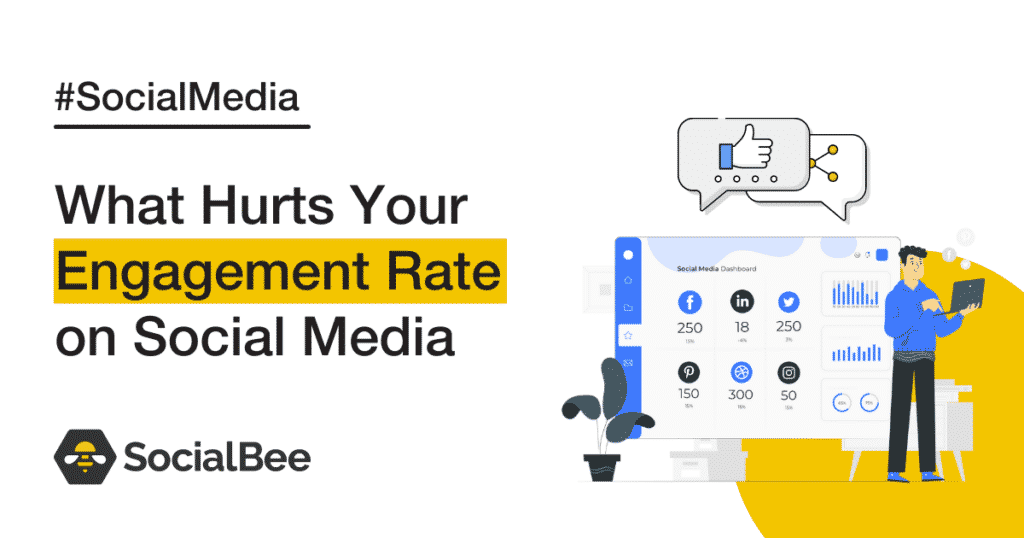
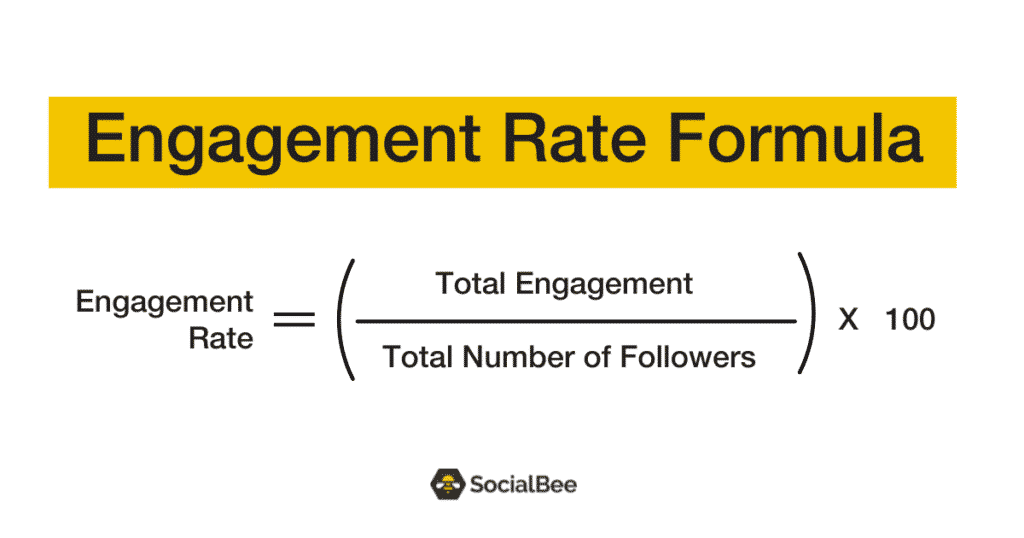
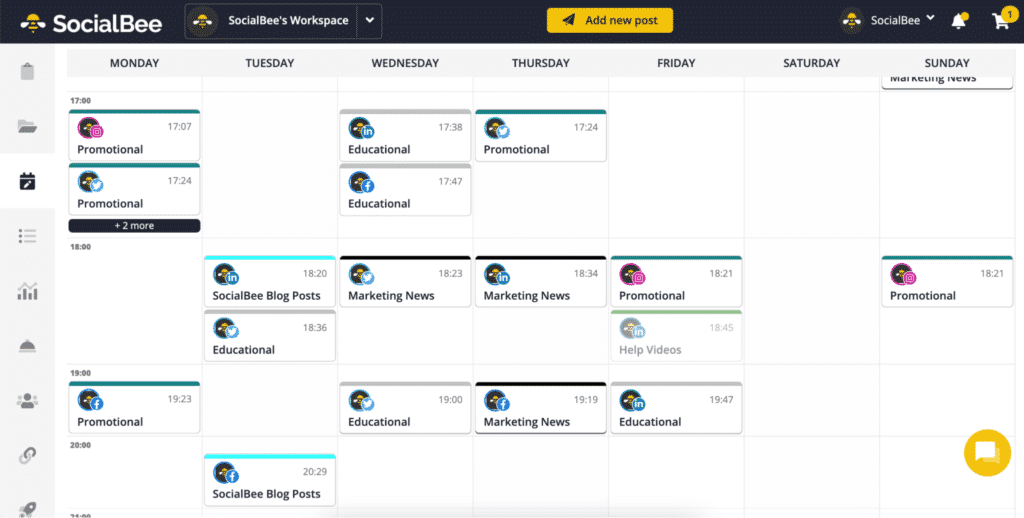
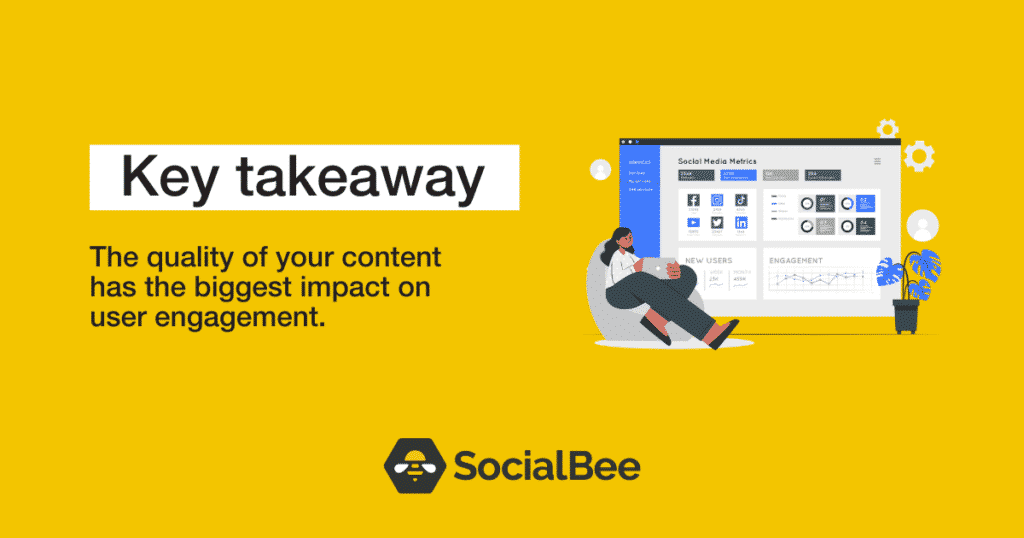
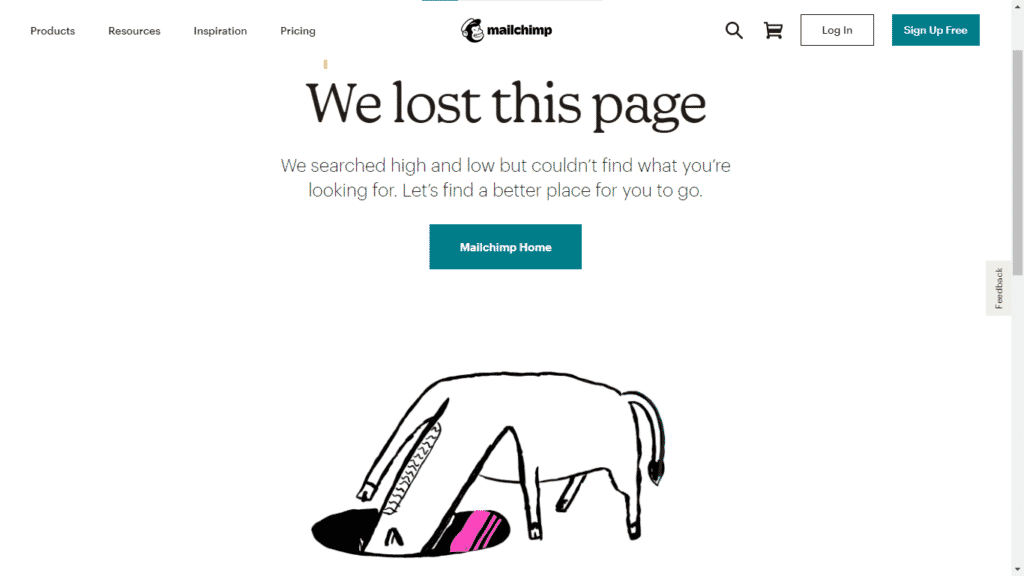



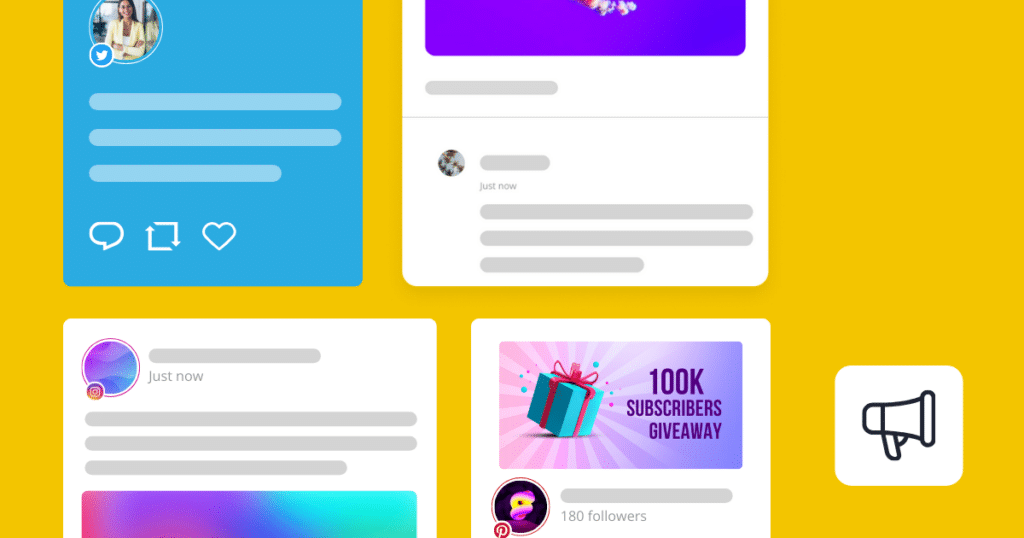

 Customizable tone of voice
Customizable tone of voice  Several variations to choose from
Several variations to choose from  1,000 pre-made AI prompts
1,000 pre-made AI prompts